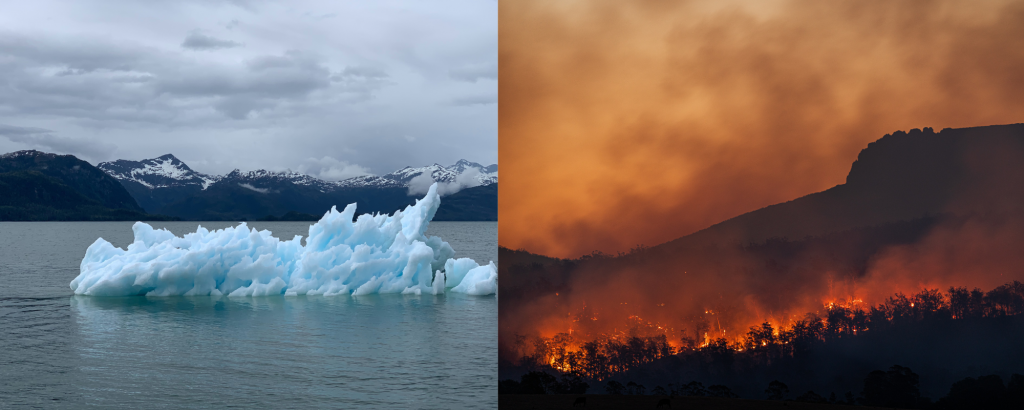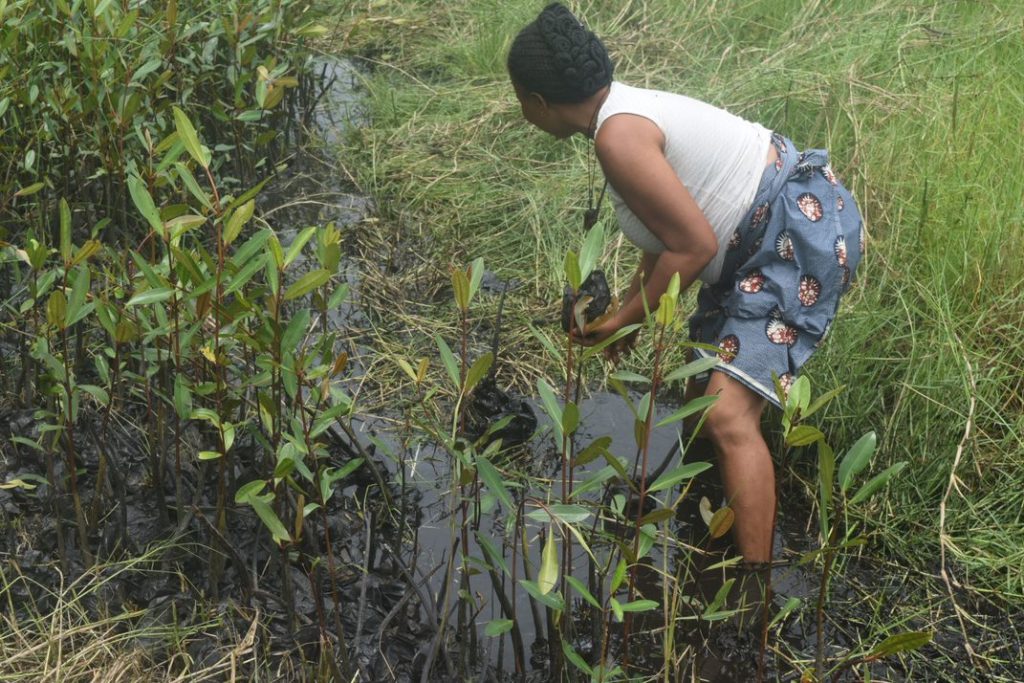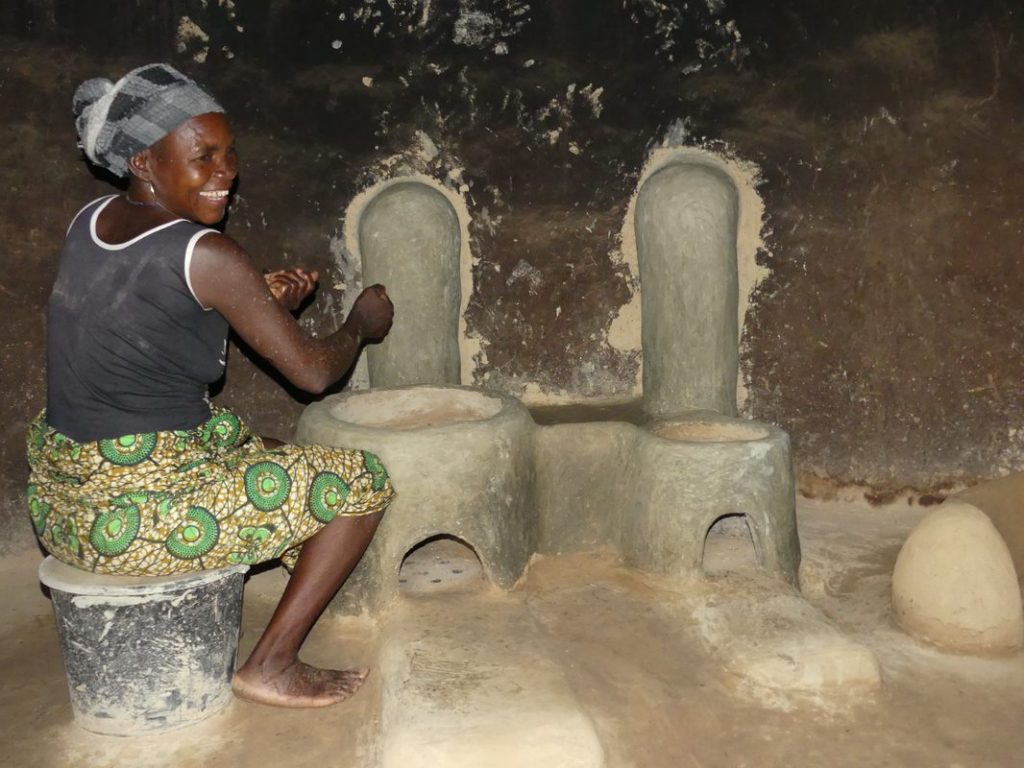Tourism and sustainable developpement
Writer : Oranne Davoust
Reading Time : 5 minutes
Facing up to the climate emergency
We hear a lot about climate change, but what exactly are we talking about?
Climate change is the result of rising global temperatures, caused in particular by a high concentration of greenhouse gases in the atmosphere.
The presence of greenhouse gases in the atmosphere is a natural process that enables our planet to maintain temperatures that are bearable for all the species that inhabit it. However, since the industrial revolution, human activities have increased and greenhouse gas emissions have risen, creating an imbalance.
But what are the effects of climate change? There are many: melting ice caps, rising sea levels, drought, violent storms, heatwaves, destruction of biodiversity, and so on. Although these effects on the climate may seem far removed from our daily lives, we are now increasingly aware of their consequences.

Become aware of your footprint and try to reduce it
Faced with the urgency of climate change, a feeling of anguish or discouragement can overwhelm us: this is known as “eco-anxiety”. Although uncomfortable, this feeling can help raise awareness and enable us to measure our environmental footprint.
The environmental footprint or carbon footprint represents the number of CO2e that an individual or company emits each year through its activities. It can be calculated using tools such as carbon footprint calculator for individuals, or by means of customized carbon footprints for companies.
Once you’re aware of your footprint, it’s important to take action to reduce it. On an individual level, there are many actions that can be taken, such as buying locally, avoiding disposable products, reducing travel, consuming better, using soft mobility, etc.
Companies can implement decarbonization plans to reduce their carbon footprint. It is also possible to adopt a sustainable development approach by following the UN’s Sustainable Development Goals. These are 17 objectives that encourage companies and public authorities to act in favor of the environment, an economy based on solidarity and a fairer society.
Whoever we are, by taking action we can become a positive agent of change.
The carbon contribution, a tool in the fight against climate change
Once you’ve calculated your emissions and reduced them, you can set about offsetting or making a carbon contribution for all the emissions you can’t reduce, known as residual emissions. The aim is to make a financial contribution to climate projects around the world, and to support projects to sequester or reduce greenhouse gas (GHG) emissions. By supporting projects outside their own perimeter, contributors enable projects that would otherwise not have seen the light of day to come into being.
What exactly are these projects?
There are two types of project: reduction projects and carbon sequestration projects.
Reduction projects are any projects that use new technologies to avoid CO2e emissions. These may include projects that support renewable energies, energy efficiency (building insulation, energy-efficient heating and cooking systems), or the replacement of less carbon-intensive products.
Sequestration projects are all those that enable the capture and storage of greenhouse gases. They include both industrial processes and natural processes such as carbon sinks.
What is a carbon sink? Carbon sinks are natural areas such as wetlands, oceans and forests on earth which, through a natural process, absorb some of the CO2 present in the atmosphere. For this type of project, the aim is to preserve existing zones, but also to restore damaged areas (e.g. reforestation of a forest, restoration of a meadow, etc.).
We often hear about carbon contributions and carbon offsetting: what’s the difference?
Carbon offsetting assumes that a tonne of CO2e emitted in one place can be neutralized by the sequestration or reduction of another tonne elsewhere. With the idea of contribution, we retain the idea that the contributor participates in a global objective of carbon neutrality by supporting projects in favor of the climate. By making a financial contribution commensurate with their emissions, each contributor acts on their own scale to improve their carbon footprint and help reduce GHG emissions on a global scale.
How can I offset my travel footprint with Village Monde?
When we travel, a large proportion of our emissions are caused by our travel and accommodation. That’s why Village Monde, in partnership with Greentripper, has set up a carbon calculator on its website, enabling travelers to calculate their travel footprint and offset it through projects that benefit the climate and local communities.
For travelers wishing to offset their footprint, two projects are available allowing you contribute to the impact of its trip.
Mangroves Economy carbon contribution project
The “Mangroves Economie” carbon contribution project is run by our partners Eco-Bénin and Village Monde.
The aim of this project is to help restore the mangroves in southern Benin. The mangrove is a fragile ecosystem that not only helps to consolidate the soil, but also plays a major role in capturing greenhouse gases. It is therefore a vital carbon sink that must be preserved. To find out more, read our article on mangroves here. The project also has positive spin-offs for local communities (training for women and young people) and the development of a solidarity-based economy.
The Mangroves Economy project is therefore a carbon sequestration project that helps capture CO2e emissions worldwide. For more information, please consult the full project sheet here.

The “Cookstove Project in Benin” certified carbon contribution project
The Greentripper project for improved stoves in Benin, supported by Eco-Bénin, is a Gold Standard-certified project for the distribution of “Wanrou” cooking equipment. This equipment consumes less wood, making communities less dependent on this resource. The project not only reduces greenhouse gas emissions, but also improves living conditions for local people, especially women.
The “Foyers améliorés au Bénin” project is therefore a carbon reduction project which, thanks to the use of new technologies, makes it possible to avoid CO2e emissions.
To find out more about this project, click here.

Promoting conscious and respectful travel
At Village Monde, as players in the world of tourism, we are committed to promoting sustainable tourism that respects the planet. We are aware of the impact of our travels on the environment, but we also know that they are a vector of wealth, of sharing and of a better knowledge of the Other. That’s why we want to be part of a dynamic that aims to raise awareness among travelers. This involves setting up our carbon calculator, supporting the Vaolo collaborative platform, and making various recommendations before, during and after the trip to reduce our impact on the environment and maximize our impact on local communities. In fact, this is the main objective of our global citizenship and environmental education program.
In fact, many actions can be implemented, such as: choosing a destination that may be less popular to avoid mass tourism and meet the locals, choosing to travel by public transport or soft mobility once on site, choosing activities that respect the environment, such as discovering mangroves for example. But also, choose eco-responsible accommodation, travel light, reduce waste, respect natural resources, consume locally or extend your travel time whenever possible. To find out more, please consult our responsible traveler charter.
Since it’s impossible to reduce carbon emissions to zero, at Village Monde we promote travel that is conscious of both its negative and positive impacts, and encourage carbon offsetting as a complementary solution to other initiatives that help limit one’s impact on the environment.
Subscribe to the travel newsletter from our collaborative booking platform Vaolo to find out what’s new, follow our explorers and receive tips for more conscious travel.
The use of the masculine gender has been adopted for ease of reading and has no discriminatory intent.
© 2024 All rights reserved. Village Monde.
By continuing to use the site, you agree to our privacy and cookie policy
I accept